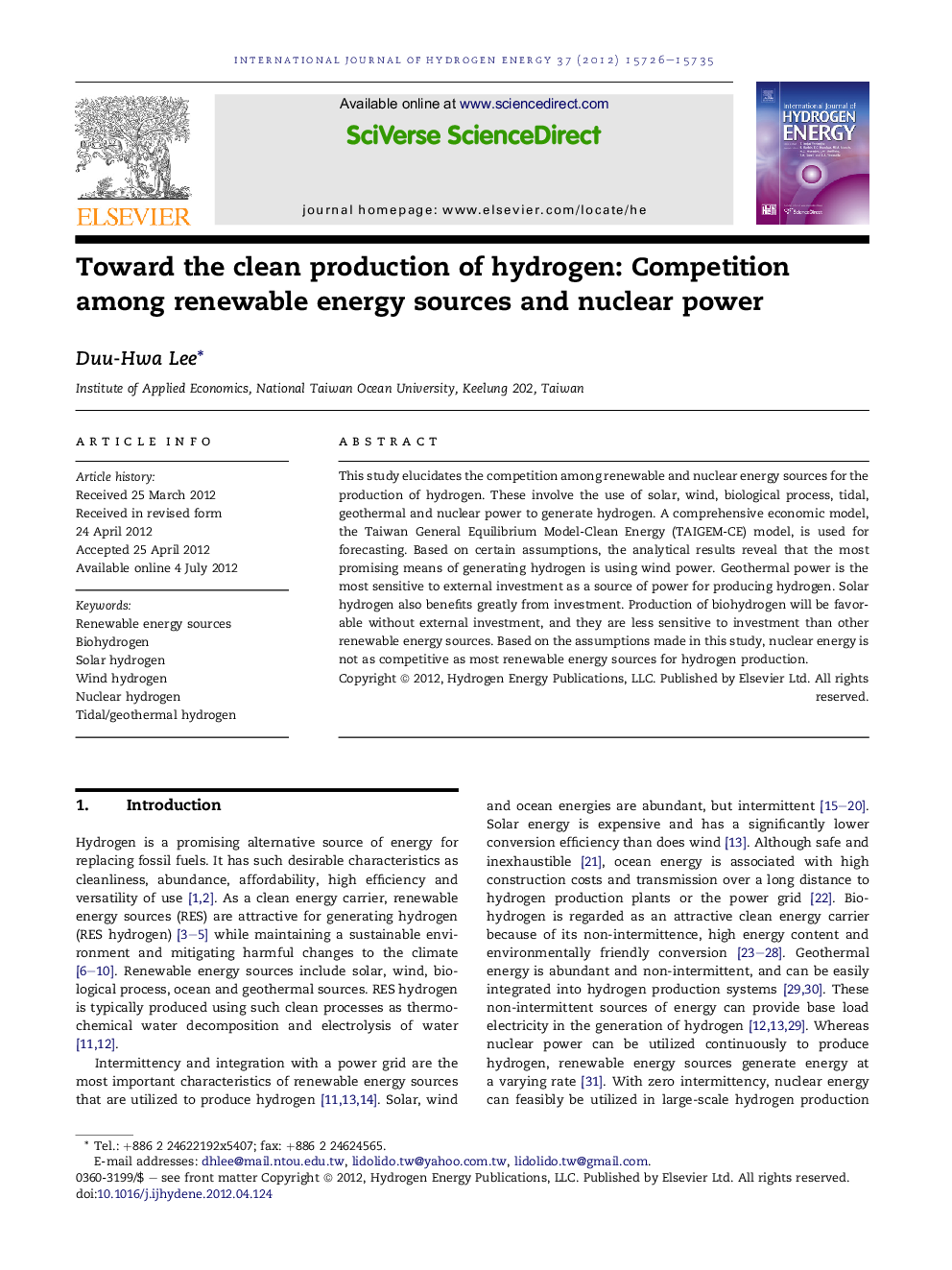| Article ID | Journal | Published Year | Pages | File Type |
|---|---|---|---|---|
| 1274587 | International Journal of Hydrogen Energy | 2012 | 10 Pages |
This study elucidates the competition among renewable and nuclear energy sources for the production of hydrogen. These involve the use of solar, wind, biological process, tidal, geothermal and nuclear power to generate hydrogen. A comprehensive economic model, the Taiwan General Equilibrium Model-Clean Energy (TAIGEM-CE) model, is used for forecasting. Based on certain assumptions, the analytical results reveal that the most promising means of generating hydrogen is using wind power. Geothermal power is the most sensitive to external investment as a source of power for producing hydrogen. Solar hydrogen also benefits greatly from investment. Production of biohydrogen will be favorable without external investment, and they are less sensitive to investment than other renewable energy sources. Based on the assumptions made in this study, nuclear energy is not as competitive as most renewable energy sources for hydrogen production.
▶ The feasibility of using RESs and nuclear energy to produce H2 is evaluated. ▶ Wind H2 will be the most promising method to produce hydrogen. ▶ Geothermal and solar will be the most sensitive sources in two sides to produce H2. ▶ BioH2 perform well without investment, yet not with investment. ▶ Nuclear energy is not as competitive source than most RESs for H2 production.
